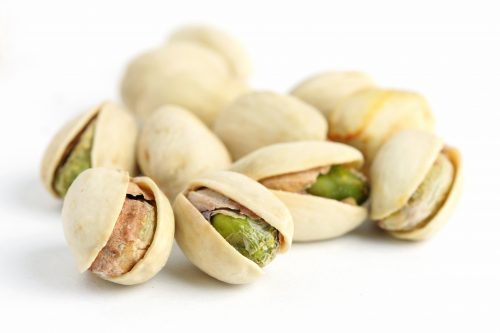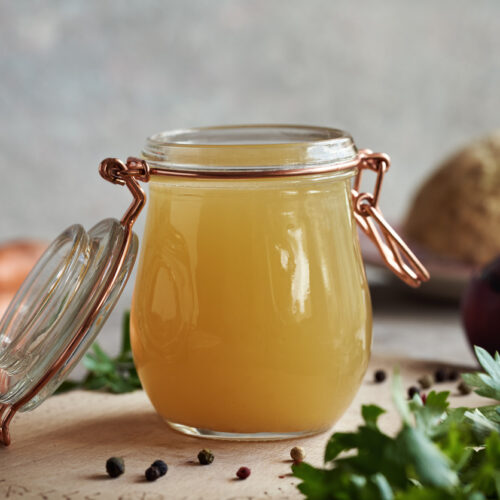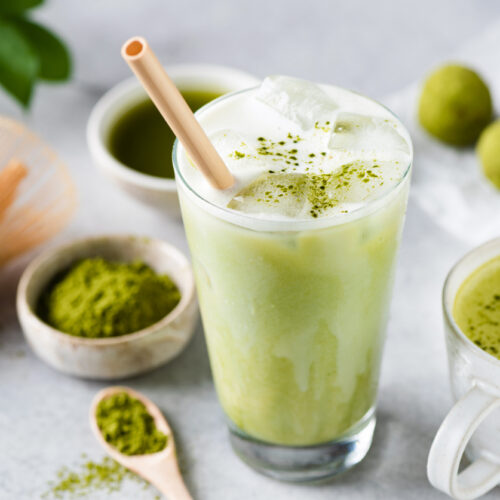
Allergies and food intolerances are on the rise, and vegan and vegetarian diets are increasingly common. Having dietary restrictions can mean we may miss out on vital nutrients, but this doesn’t have to be the case – just follow Kate Marsh’s advice.
Nut allergy
If you had a peanut allergy, you’d know about it – it’s the most common cause of severe food allergy reactions. Symptoms can be triggered after exposure to even trace amounts – simply touching a surface where peanuts have been can be enough for some people. And the results can be fatal.
Whether you have a peanut or tree nut allergy, it’s essential to maintain a strict, nut-free diet – which means you’re potentially at risk of missing out on nuts’ heart-healthy ingredients: dietary fibre, essential fats, a range of important vitamins and minerals, plant sterols and antioxidants.
Maintaining health
Luckily, you can ensure you meet your nutritional requirements by eating a range of other plant foods including whole grains, fruits, vegetables and vegetable oils. If you’re not allergic to seeds, you can also use these in place of nuts – both tahini (sesame seed spread) and sunflower seed spread make tasty alternatives to peanut butter.
Boost your nutrients
If nuts are off your list but you can still eat seeds, a slice of whole grain toast with tahini paste and sliced banana makes a deliciously satisfying snack rich in the fibre and healthy fats usually found in nuts. Bananas are also high in potassium, an important mineral found in nuts.
Seafood allergy
If you’re one of the estimated 1.5 per cent of the population with an allergy to seafood, you’re missing out on one of the major sources of omega-3 fatty acids, which have been linked with a reduced risk of heart disease, stroke, dementia, macular degeneration (deteriorating vision), depression, and some types of cancer. But there are other foods which contain these important fats, including linseeds, canola oil, walnuts, soy and flaxseed oil. Some foods now also have added omega-3 from non-seafood sources, for example, omega-3 eggs – these come from chickens fed on an omega-3 rich diet.
Boost your nutrients
Try a roast vegetable, walnut and chickpea salad with flaxseed oil dressing. Walnuts and flaxseed are rich in omega-3 and chickpeas are a rich source of protein, iron and zinc.
Cow’s milk allergy
Cow’s milk is a common cause of food allergy in babies, estimated to affect one in 50 infants in New Zealand. Most grow out of this by the age of three, but until then, infants need to avoid cow’s milk, cow’s milk products (such as cheese, yoghurt, cream, butter) and products which contain cow’s milk. Unfortunately, this means they are at risk of missing out on the calcium and protein normally received through dairy consumption.
Maintaining health
An allergic infant needs breast milk or an appropriate dairy-free formula, such as one based on soy or a special, hydrolysed formula (where the proteins which cause the allergy are broken down). Calcium-fortified soy milk, soy yoghurt, soy custard and tofu are suitable supplements for older kids, but oat and rice milk aren’t – their protein contents are too low for a growing child’s needs.
Boost your nutrients
Try a yummy fruit smoothie made with calcium-fortified soy milk, soy yoghurt and banana or berries. Soy products are also a great source of the good quality protein usually supplied by dairy products.
Wheat intolerance
Wheat is the staple grain in New Zealand, but for some it can cause uncomfortable symptoms, such as wind, bloating and constipation and/or diarrhoea. If you’ve been diagnosed with wheat intolerance, you’re probably not eating breads, cereals and pastas, which can mean missing out on important dietary fibre and healthy whole grains – unless you know what alternatives to eat.
Maintaining health
Fortunately, plenty of other grains can provide you with similar health benefits. Try crackers and breads made with rye, porridge made from oats, soups, casseroles and risotto made with barley, and pancakes made with buckwheat flour. You can also replace couscous with quinoa, add buckwheat kernels to bread, and mix oats with amaranth for a delicious, wheat-free muesli base.
Boost your nutrients
Start your day with a wheat-free muesli by combining rolled oats, rye and barley, quinoa flakes and amaranth with a mixture of dried fruit, nuts and seeds.You still get all the benefits of a variety of fibre-rich whole grains.
Lactose intolerance
Lactose intolerance occurs when your body produces low levels (or none at all) of the enzyme lactase, leaving you with symptoms like bloating, stomach pain and diarrhoea when you eat lactose-containing foods. The cause may be genetic, a temporary result of a stomach bug, or age-related – our production of lactase can decrease as we age. If you require a low lactose-free diet, you will need to avoid milk, custard, ice cream and yoghurt. Depending on your level of lactase deficiency, you may also need to avoid soft cheeses, cream, and products with small amounts of dairy, too.
Maintaining health
Dairy is an important source of calcium, zinc, protein and vitamin B12, so make sure you include replacement foods in your diet, such as lactose- free milks and calcium-fortified soy milks, and soy yoghurt. Rice and oat milks with added calcium are also suitable, but only for adults – they’re too low in protein for kids. Other non-dairy sources of calcium include canned fish with bones, almonds, unhulled tahini, calcium-set tofu, dried figs and green leafy vegetables.
Boost your nutrients
Try a calcium-rich salmon mornay using lactose-free milk, canned salmon, brown rice, peas and corn, topped with light tasty cheese. Milk, salmon and cheese provide protein, zinc and vitamin B12, while salmon is rich in vitamin D, helping you to better absorb the calcium.
Coeliac disease
Those with coeliac disease have an immune system response to food containing gluten – so when gluten-containing grains are eaten, damage is suffered to the lining of the intestinal wall, preventing nutrients from being properly absorbed. All products made from wheat, rye, barley and oats (which includes most breads, cereals, biscuits, crackers, pasta and noodles, as well as a range of processed foods need to be strictly avoided. Similar to wheat intolerance. This can make it difficult to get enough fibre and whole grains, but coeliac disease allows for fewer alternatives. Luckily, brown rice, rice bran, amaranth, buckwheat and quinoa are all gluten-free.
Boost your nutrients
Try starting the day with a bowl of porridge made from brown rice, buckwheat and quinoa. Mix in some stewed apple and cinnamon for sweetness and add a handful of chopped nuts and seeds – this will give you extra fibre and nutrition.
Fructose malabsorption
Fructose malabsorption occurs when the digestive system is unable to break down fructose (the sugar found in fruit and honey) and fructans (the chains of fructose molecules found in some vegetables and wheat products). Fortunately, most people with fructose malabsorption don’t need to cut all fructose from their diet, but instead need to reduce the amount they eat by avoiding foods high in fructose.
Maintaining health
To ensure you’re not missing out on important vitamins and minerals from fruit, include moderate amounts of low-fructose fruit such as berries, citrus fruits, pineapple, kiwifruit and ripe bananas. Eat plenty of vegetables and salads, but avoid or limit asparagus, leeks, onion and artichoke, as these contain fructans.
Boost your nutrients
When you need to limit your fruit intake, snack on a platter of raw vegetables including cherry tomatoes, carrot sticks, snow peas and red capsicum. These vegetables are rich in vitamin C, potassium and beta-carotene, important vitamins and minerals found in fruit.
Vegetarian and vegan diets
There are many reasons to go vegetarian, but you need to be organised – it’s not as easy as simply cutting out meat! Avoiding all meat, chicken and fish can potentially mean missing out on iron, zinc and omega-3 fats. Avoiding all animal products by following a vegan diet can potentially mean missing out on calcium and vitamin B12 as well.
Maintaining health
To ensure you’re getting essential nutrients, include foods such as legumes, tofu, nuts, seeds, whole grain breads and cereals in your daily diet. Green leafy vegetables provide iron, too. However, as our bodies don’t absorb iron from plant foods as well as iron from red meat, include vitamin C-rich fruits and veges such as berries, citrus fruits, kiwifruit, tomatoes, capsicum and broccoli to increase your iron absorption. If you eat eggs, these can provide iron, zinc and vitamin B12, while dairy products are a great source of calcium, zinc and vitamin B12. If you’re a vegan, ensure you choose a brand of soy milk fortified with calcium and vitamin B12 so you don’t miss out on these important nutrients. As vitamin B12 is only found in animal products, it’s especially important for vegans to choose foods fortified with this vitamin such as some soy milks, meat substitutes and Marmite, or to take a supplement as B12 deficiency can lead to irreversible nerve damage. Lastly, don’t forget your long-chain omega-3 fats – supplements (DHA only) made from an algae source are now available as an alternative to fish oil, or see Seafood allergy (above) for other useful ideas.
Boost your nutrients
A tofu and vege stir-fry with capsicum, broccoli and plenty of leafy greens, served with brown rice and a sprinkle of cashews makes the perfect vegtarian or vegan meal. Tofu, brown rice and nuts all provide iron and zinc, while the veges are rich in vitamin C to boost iron absorption.
Allergy versus food intolerance
Many people have difficulty distinguishing between food allergies and food intolerances, but they’re quite different.
Food allergies are triggered by the proteins found in foods such as nuts, cow’s milk, seafood and eggs – the body’s immune system overreacts, triggering an immediate flood of chemicals which cause a range of symptoms (some which are life-threatening). It’s like sending in a SWAT team to respond to a knock at the door
Food intolerances, however, are triggered by chemicals found in foods and, because they’re dose-dependent, cause reactions of varying degrees. An allergy is related to a specific food, while intolerance is a reaction to chemicals, which may occur naturally, or are added to a wide variety of foods
How many New Zealanders are affected?
The Australasian Society of Clinical Immunology and Allergy (ASCIA) estimates that around one in 20 children and one in 100 adults suffer from food allergies. Luckily, many allergies are not severe and most kids will grow out of them. However, allergies to nuts, seeds and seafood are likely to be life-long and allergies developed as an adult generally persist. Food intolerances are more common, although how many of us are affected is unknown. Intolerances may include reactions to lactose, fructose, wheat, gluten, additives and naturally occurring chemicals such as salicylates, glutamate, and amines
Could I have an allergy or intolerance?
Symptoms to a food allergy include swelling, hives, eczema, diarrhoea, vomiting and, in some cases, breathing difficulties and anaphylaxis. Reactions are usually immediate and can be severe and even life-threatening. Food intolerance and sensitivity are much more common. Symptoms include hives, skin rashes, asthma, headaches, digestive problems and eczema. Unlike a food allergy, reactions are dose-dependent and delayed, making them more difficult to detect and diagnose.
Useful websites
For more information about food allergies, go to www.allergy.org.nz
For more information on coeliac disease, go to www.coeliac.co.nz
The Gluten Free Food & Allergy Show is an expo of ideas and solutions for people with allergy and food intolerance issues. For more information, go to www.glutenallergy.co.nz
www.healthyfood.com










